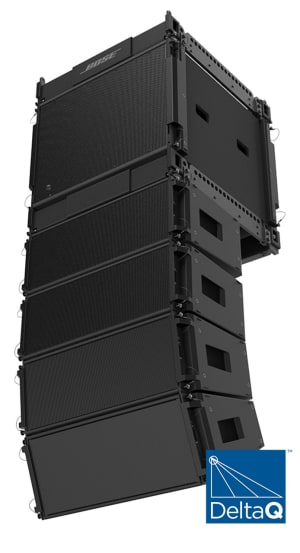We've all had that "wow" experience at an incredible worship festival or concert tour. Nothing beats that big stage, monstrous loudspeaker system, energetic crowd and amazing bands. When we get home to our own facilities, we want to recreate that experience. Naturally, if we take the gear festivals are using and put that same equipment in our church it will sound the same, right?
This is exactly what has happened for the last 20 years, (especially in the loudspeaker industry) where traditional concert line arrays have been brought from the outdoor festival/tour world and put inside buildings. What?s the problem with that?
In short, traditional concert line arrays were developed to provide the best possible sound for outdoor festivals where the audience is in a big flat field. Audio needs to be "thrown" very far from the stage and very wide across the field. Line array theory is the perfect approach to this scenario; a line of many small (relatively) elements will deliver very tight vertical pattern control, which is great for throwing sound energy great distances, and virtually no horizontal control, which is great for covering very wide audiences. But what happens when you bring those indoors?
There are two key differences between indoor and outdoor concert line array applications: walls and total vertical coverage angle.
Walls
Where line arrays outdoors do an excellent job covering a very wide area, indoors this just puts lots of energy on the side walls. In many cases, more energy on the walls than in the actual seating areas. This causes all kinds of reflection problems, which people try to solve by putting lots of acoustic treatment on the walls, and ultimately is simply a waste of energy and dollars spent putting sound in places where the congregation is not sitting.
Vertical coverage angle
This is what we consider the angle of coverage, as viewed at the loudspeaker position, of the farthest listener (back of the room/field) to the closest listener (front of the room/stage). Outdoors in a big flat field, this angle is very low ("tight" vertical coverage) such as 10 to 20 degrees, which is perfect for traditional line arrays.
However, indoors, the loudspeakers are usually up near the ceiling and need to cover from the rear of the room (many times up to a balcony) all the way down to underneath the loudspeakers right in front of the stage. This angle is very wide in comparison to outdoors and can easily be 50 to 80 degrees of vertical space in typical worship spaces. This causes us to take traditional line array modules and "splay" them, basically breaking the concept of a true line array of elements. This results in audible seams between modules and ultimately uneven coverage throughout the congregation.
What if we could take the best of the outdoor concert line arrays but do something to make them better suited for the complications of indoor facilities?

DeltaQ provides real horizontal AND vertical pattern control in a concert line array format. Through the use of large format waveguides, made possible by wide bandwidth compression drivers, we can now change (delta) the coverage pattern of each module ("Q" in engineering speak) within the array.
This allows us to match the loudspeaker coverage to the audience area(s) and keep energy off the areas where we do not have an audience (like walls). An additional benefit of DeltaQ is the ability to scale the array size (number of elements) to the desired performance, aesthetic size, and budget, resulting in excellent concert quality sound, matched to the seating in your unique worship facility, and not wasting energy and valuable church dollars on sound in the wrong places.
This technology has been in use for the last 5 years in the Bose RoomMatch® concert line array modules. CCI Solutions was involved in the development of this product and has an expert design team that uses Bose Modeler® acoustic system design software to accurately match the loudspeaker coverage to the size and shape of each unique worship center, and as a result have many pleased worship facilities with installed RoomMatch systems.
Along the way Bose has heard loud and clear from several churches and our friends at CCI Solutions that they love RoomMatch but want a version that is smaller, louder, and more portable. The future is almost here, with Bose ShowMatch DeltaQ array loudspeakers being introduced this Fall.